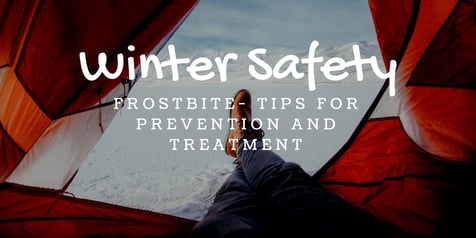Winter Safety: Frostbite
Tips for prevention and treatment

In cold climates, everyone is susceptible to frostbite, but taking a few simple precautions can help keep you safe and healthy during the winter season.
Causes
Frostbite is caused by prolonged exposure to cold temperatures, usually accompanied by a low wind-chill factor, or by brief exposure to excessively frigid or wet conditions.
Risk Factors
Certain people are more susceptible to developing frostbite, including children, the elderly and those with circulatory problems. People who have diabetes are also at a greater risk.
Symptoms
Symptoms of frostbite may include partial or complete numbness, discoloration of the skin and burning and/or tingling sensations. If left untreated, frostbitten skin gradually darkens after a few hours. Skin destroyed by frostbite is completely black and looks loose and flayed, as if burnt.
Prevention
To reduce your risk of frostbite, it’s important to protect your hands, feet, nose and ears. Bundle in warm, layered and loose-fitting clothing when heading out into winter’s worst weather.
At the first sign of redness or pain in your skin, which may indicate the frostbite is developing, get out of the cold. Also, avoid drinking alcoholic beverages – alcohol may prevent you from realizing that your body is becoming too cold. Also pass on smoking cigarettes, which can affect your blood vessels, increasing your risk of frostbite.
Treatment
Move to a warm area as soon as possible. While it’s tempting to rub or massage the affected area, it’s best to place the affected area in warm water until the skin is soft and sensation has returned. Next, wrap the area in clean dressings and seek medical help. If it is unlikely that the affected area can be kept thawed, treatment should not be carried out as a second round of freezing can cause more extensive and severe damage.
Did You Know…?
A person with frostbite on the extremities may also be subject to hypothermia or lowered body temperature. Check for hypothermia and treat those symptoms first.
This article is for informational purposes only and is not intended as medical advice. For further information, please consult a medical professional.
© 2007-2008, 2010 Zywave, Inc. All rights reserved.
